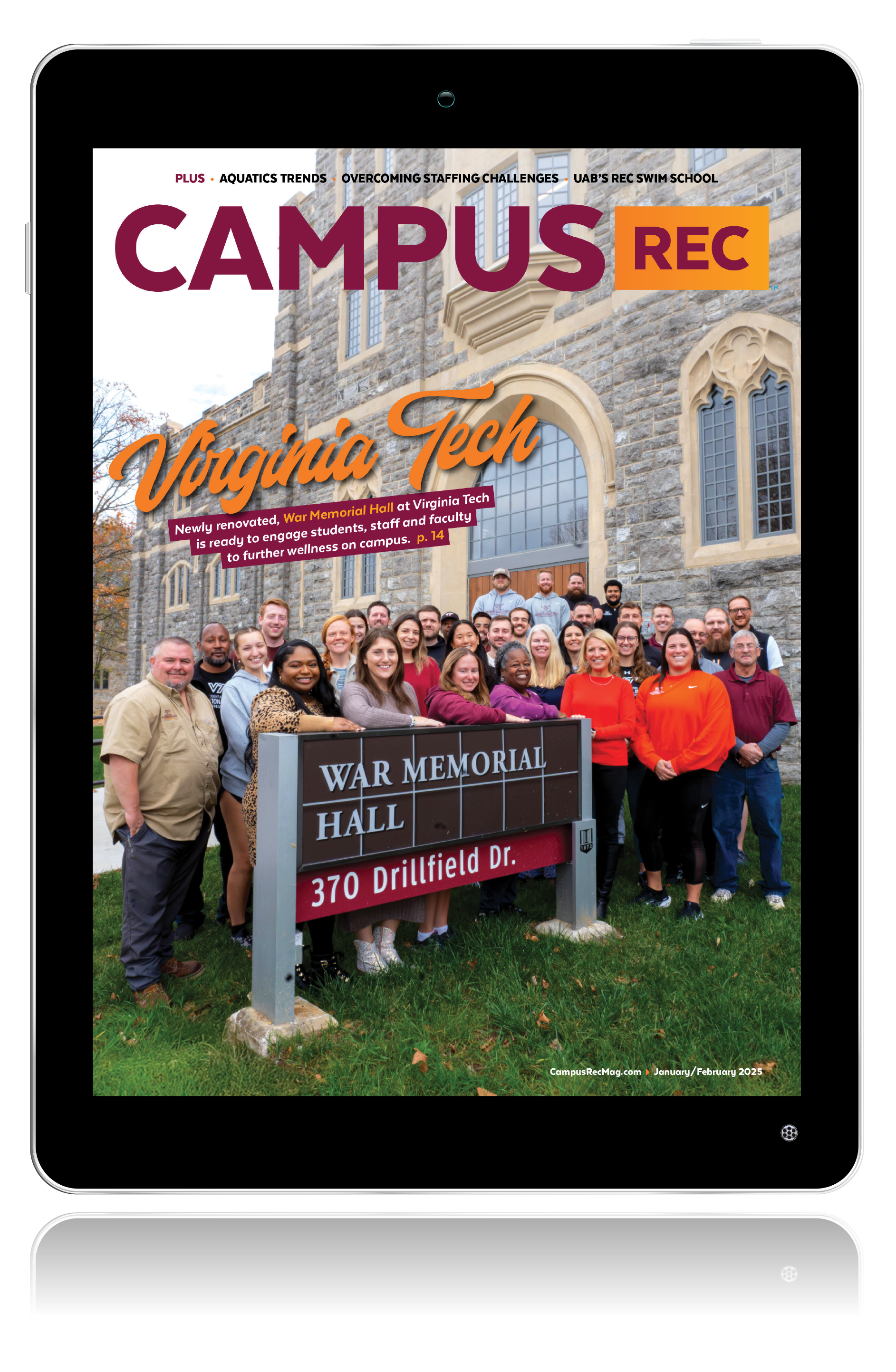Designing and constructing campus recreation facilities that meet students’ evolving needs and achieve cost, timeline and quality targets is no easy task.
Fortunately, Virtual Reality (VR) is quickly becoming a real asset for campus leaders and designers as they seek to deliver valuable recreation centers with maximum ROI. This new level of engagement leads to enhanced communication, reduced risk, higher quality outcomes, and cost and time saved. Here’s a look at how it specifically generates these results:
Engagement and Communication
Engaging students, staff and other key stakeholders has always been an important step in the design of campus recreation centers. Being able to hear directly from these future building users about their preferences, needs, and hopes for new or renovated recreation spaces helps surface important ideas and issues that can strengthen the design process. To date, our best methods for soliciting this feedback have included group discussions, patient interviews, sharing images and trying to articulate how renderings and floor plans translate to actual weight training rooms, court spaces and/or lap pools.
All of these methods are still important, but VR can enhance them. Imagine being unsure about where to place an indoor jogging track in the new recreation center or whether to use an area for a climbing wall or additional multi-activity space. With VR models, design teams can actually embed students in these possibilities and document their real-time reactions and experiences. These VR models help students better understand the eventual building and better articulate their ideas, preferences and/or voice what they may dislike about current design ideas. This helps colleges and universities more accurately understand how key choices impact students and feel more confident in a final selection. VR empowers this level of feedback and can apply to just about every key space or decision that goes into creating successful campus recreation centers.
Assurance of Outcomes
It’s not easy to look at building sketches and renderings and fully understand a future facility. VR makes it easier for staff, athletes, donors and fans to experience these spaces during any and every phase of a project before they exist, giving them a stronger understanding of the final product. This leads to better ROI and higher assurance of outcomes.
Faster Decision Making and Cost Control
Given that VR fosters better communication during the design and construction of an athletic facility, the technology also accelerates decision-making and saves both time and costs. Every time a designer uses a VR model to show their client how a certain space will function and they can eliminate needing to create a new rendering or schedule a future meeting — they move a step closer toward delivering the project on schedule and on budget. While the creation of VR models may require a few more resources up front, expenditure of those resources pays higher dividends as a project progresses. Those seeking to maximum ROI should leverage VR.
John McAllister is an awarding-winning designer for CannonDesign. Reach him at jmcallister@cannondesign.com.










